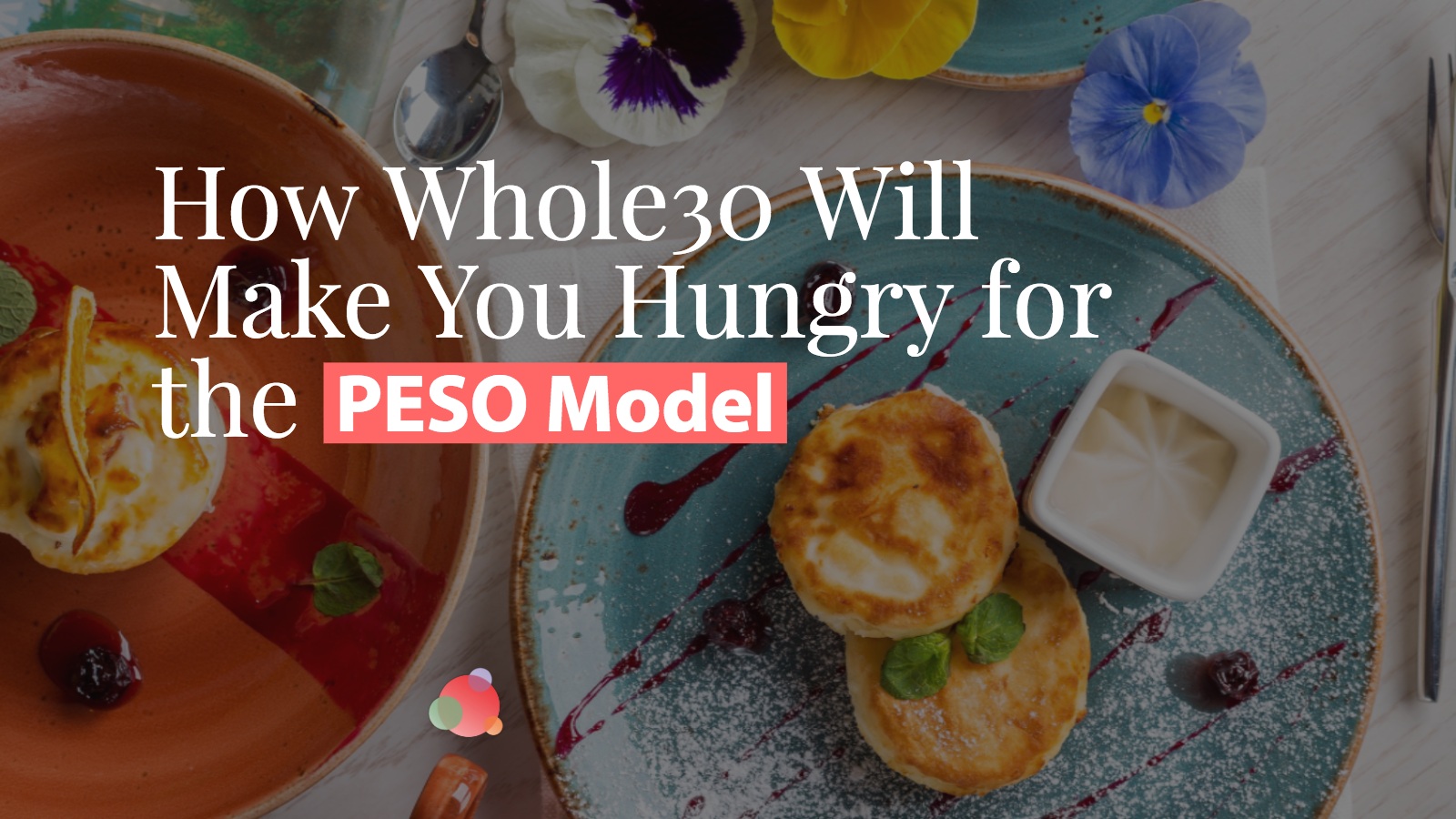
Whether they know it or not, the folks at Whole30 rock at implementing the PESO model.
The company uses the PESO model year-round to promote their nutritional reset program.
But this past January, the team really ramped up efforts to increase participation in the program.
Google Trends provides us with this sweet visual showing a sharp increase between December 2017 and February 2018.

Results like this are enough to make any communications pro drool.
Why the primary focus on January?
Because while you can complete the 30-day nutritional reset at any point, a January start in the program is pushed to align with people’s desire to start fresh with a new year.
Their team strategically used all four media types, paid, earned, shared, and owned, to promote participation in January.
Regardless of whether you think the program is science-based or baseless, one thing is clear—the Whole30 team knows how to spread its message.
Let’s evaluate how they put the PESO model to work.
Minimal Use of Paid Media
I dug deep and couldn’t find a blatant example of Whole30 paying outright for sponsored posts.
And having done the program myself, I fit their target audience.
It is likely some Facebook posts received boosts, but overall engagement was high.
No one particularly stood out.
This high engagement is a testament to their focus on community building, but more on that later.
Interestingly, there were plenty of examples of companies paying for affiliation with the Whole30 brand.
For instance, Blue Apron partnered with Whole30 to create meals aligned with program guidelines.
To promote the partnership, Blue Apron was running Google Ads, sponsored Facebook and Instagram posts, and sponsored articles.
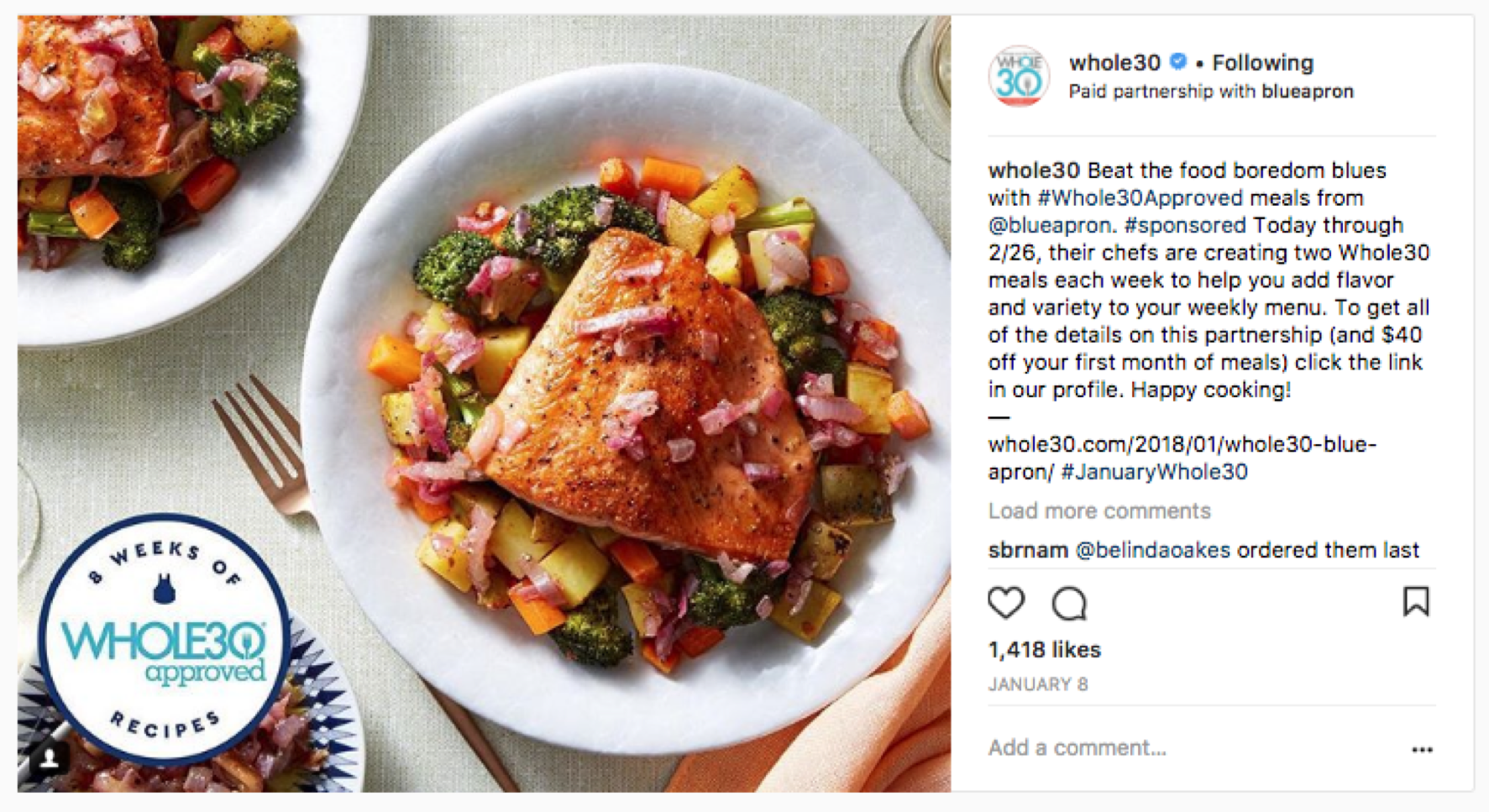
And that is just one example.
Other paid partnerships include Thrive Market, Applegate, and the personalized meal planning platform Real Plans.
The fact that paid promotions were difficult to find is indicative of the Whole30 brand reputation.
They can lean on their authority and the other three media types.
How This Can Work for Your Brand
Build out the other three media types first, especially owned media, before you spend money on paid media. The value you build through your reputation can help foot the bill for paid distribution.
Positive and Not So Positive Earned Media
Now, this is where things get interesting.
In January 2018, Whole30 earned placements in Forbes, Fortune, HuffPost, Women’s Health, and Greatist, just to name a few.
Melissa Hartwig, the co-founder, was also a guest on both Access Online and Live with Kelly and Ryan.
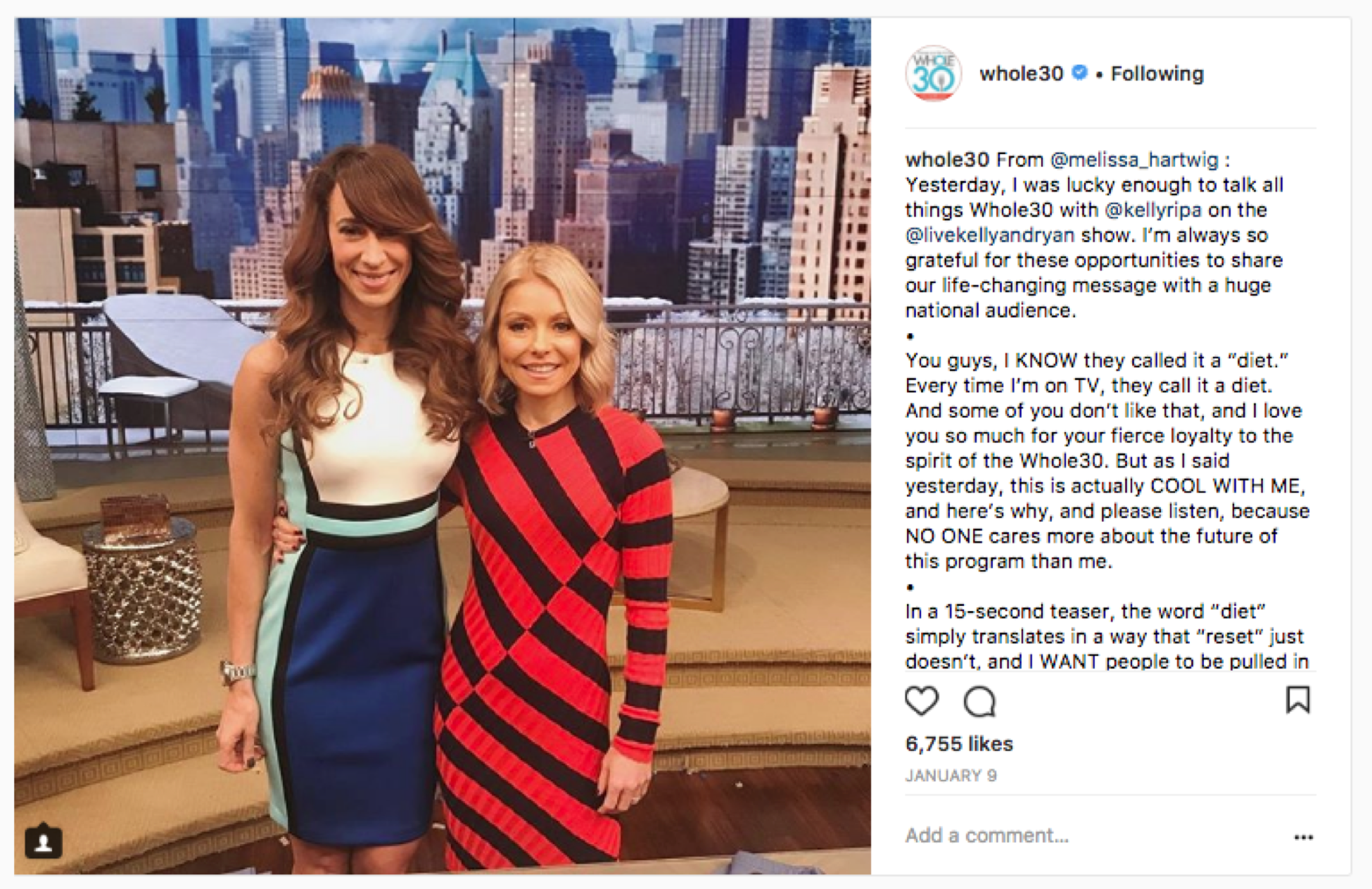
While most media mentions were positive, the haters began to vocalize, as they do for everything these days.
Fortune ran an article titled, ‘Why Everyone You Know is Doing the Whole30—the Diet Nutritionists Call ‘Baseless.’”
Ouch.
Hartwig and her devoted fans responded and stuck to their message—Whole30 is not a diet.
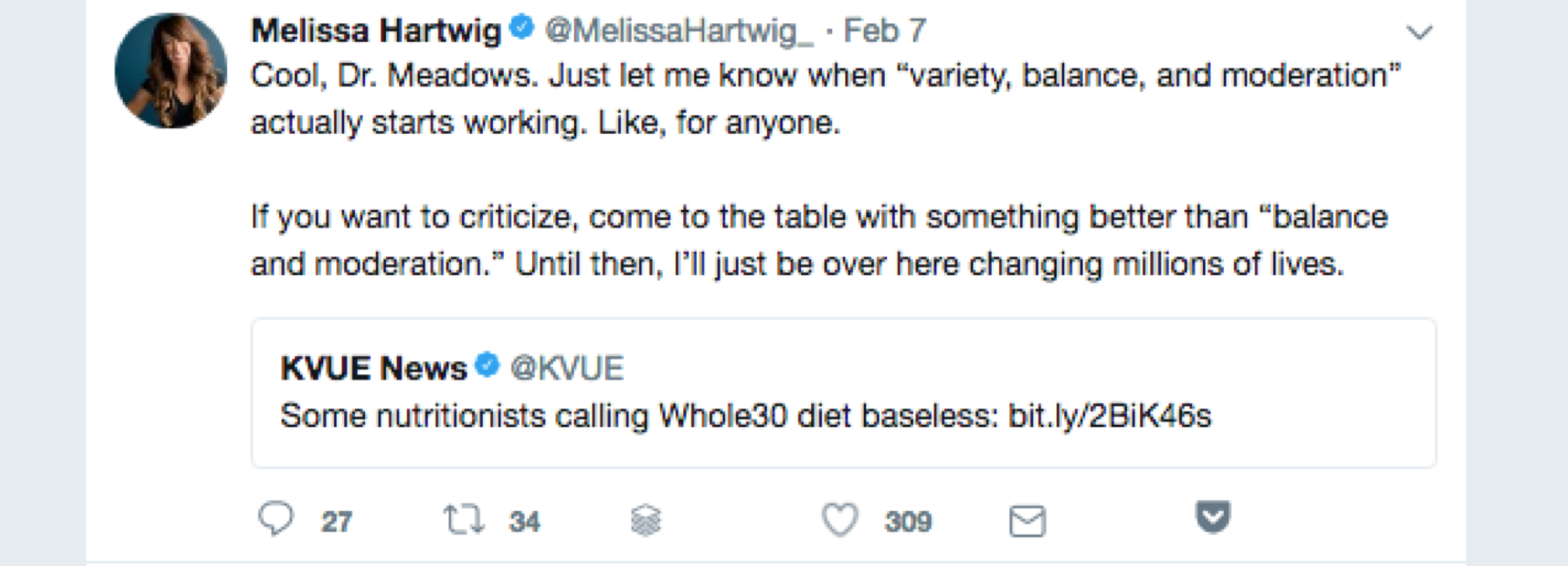
Whole30 is not new to negative media coverage.
In January 2017, Greatist, an online health and wellness content hub, came to their defense with a rebuttal article.
This would not have happened if the two organizations didn’t already have an established relationship.
How This Can Work for Your Brand
Earning placements in targeted media outlets puts your brand in front of its target audience and provides third-party validation.
By establishing relationships with journalists and bloggers, you increase the likelihood of them sharing your message and even coming to your defense.
And, by constantly monitoring media mentions, you can respond quickly.
Shared Media Done Right
Shared media is where the Whole30 team reigns supreme.
With four designated Instagram accounts, Twitter, and Facebook the team regularly publishes quality posts and engages with its followers.
This consistent presence fosters an active audience and brand advocates, proving that when you engage on a human level it can lead to a strong online community.
To support participation in the January program, followers received daily motivations, a dedicated hashtag, and graphics to share on social channels.
The @whole30recipes account consists entirely of takeovers by food bloggers.
It boasts one million followers—almost double the following of the main Whole30 account.
The bloggers post recipes three times a day and respond to follower questions.
And from what I can tell, they are doing it for free.
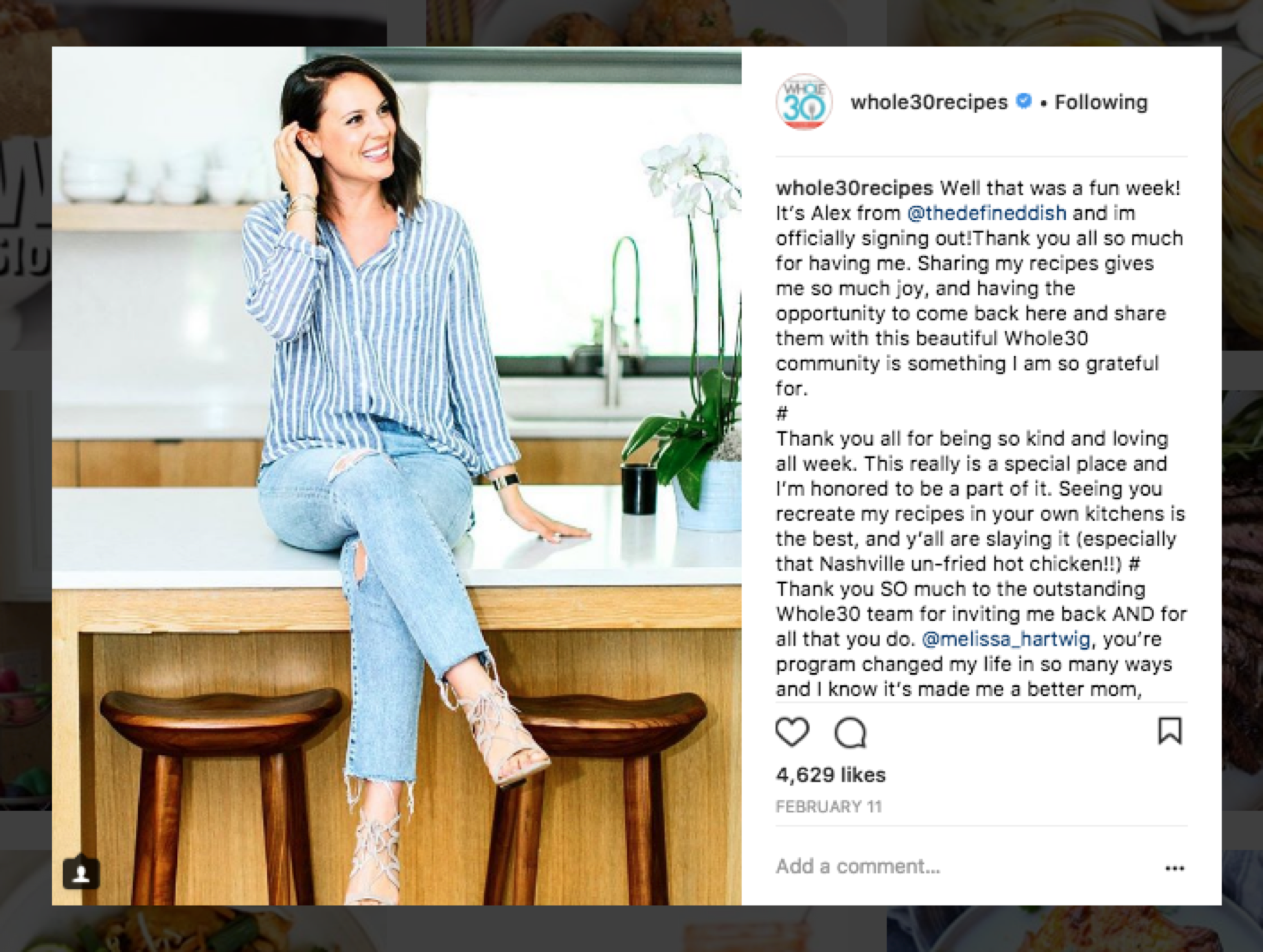
The Whole30 affiliation provides value for food bloggers and motivates them to contribute to its community.
Ms. Hartwig’s social media accounts further amplify the brand, showing how personal and organizational brands bolster each other’s reputation.
And to further support the community, an online forum provides guidance as people complete the program.
Moderators, who aren’t necessarily employees, run the forum.
Their shared media efforts lean heavily on forming relationships with individuals and influential bloggers.
With an emphasis on community building, they create a fiercely loyal and highly engaged following.
The community eagerly shares the Whole30 message and willingly promotes the program.
Is it any wonder paid media was used so minimally?
How This Can Work for Your Brand
Choose a platform that best supports your organizational goals and own it.
Regularly interact with your community and distribute quality content on a consistent basis.
And, find influencers to expand and strengthen your community relationships.
Owned Media is the Foundation
All of the above would not have been possible if their owned content was sub-par.
The program gets support from six (yes, six!) books, two of which had a late 2017 release in anticipation of holiday giving and those getting a January start in the Whole30 program.
So, guess what happened in January?
They began an aptly-timed cross-country book tour promoting the new releases, further sparking conversation around the program.
Smart move.
These revenue drivers receive support from free health and wellness content such as program guides, a blog, and an email newsletter.
That means it’s entirely possible for someone to complete the program without buying a single book.
The Whole30 owned media establishes its authority and is the foundation for all other media types.
How This Can Work for Your Brand
Dedicate time to creating quality owned content that can feed the PESO beast.
If your book (or other owned media) is terrible, paid media will be wasted, journalists won’t bite (unless it’s really bad), and influential bloggers won’t want to share it with their followers.
The PESO Model Works
While some media types get more prominent use than others, Whole30’s integrated effort led to some serious visibility and contributed to achieving real business results.
Three of the six Whole30 books are currently on Amazon’s list of top 20 best-selling cookbooks.
Furthermore, natural and organic meat company, Applegate, attributed increasing sales, web traffic, and social following to its licensing partnership with Whole30.
So if your media strategy needs a reset, look to the PESO model to get you back on track.
Watch the Spin Sucks PESO 2.0 Masterclass for FREE and learn how to implement the PESO model to achieve unparalleled communications results.